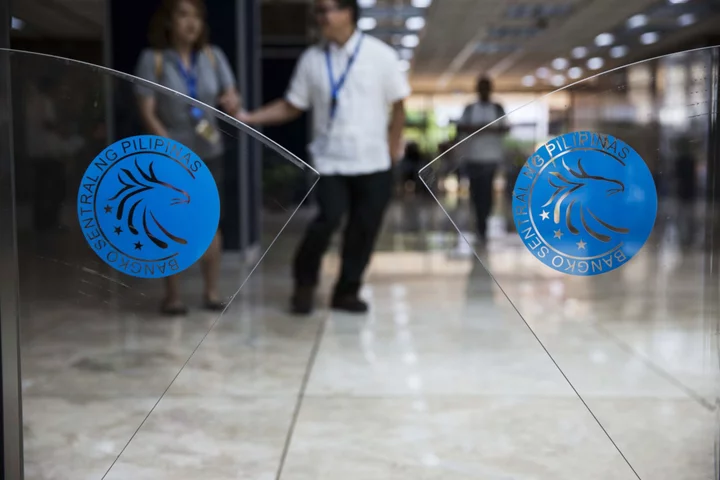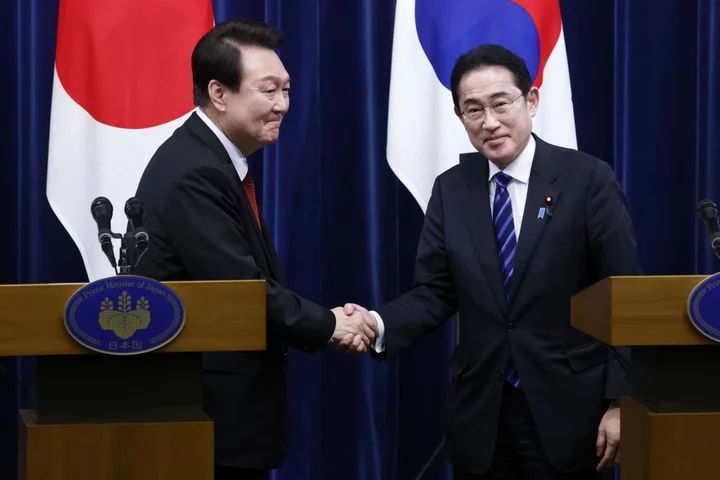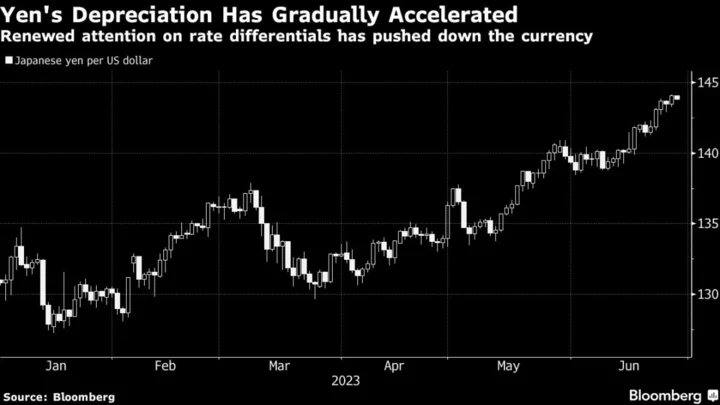The Philippine central bank left its benchmark interest rate unchanged for a third straight meeting as the economy slowed while signaling that policy settings will remain tight amid inflation risks.
The Bangko Sentral ng Pilipinas maintained its overnight reverse repurchase rate at 6.25% on Thursday during Eli Remolona’s first policy decision as governor. The move was predicted by 22 of 24 economists in a Bloomberg survey, with two expecting a rate hike.
The BSP is “ready to tighten” monetary policy if needed, Remolona said at the briefing in Manila as he ruled out a rate cut at next month’s meeting. Authorities are also unlikely to reduce the reserve requirement ratio further while it’s still on tightening mode, he said.
The central bank raised inflation forecasts through 2025 as it said that the balance of risks to the outlook still leans to the upside, citing persistent supply constraints on key food items, higher wages, power and fuel costs along with the threats of El Nino.
The pause gives the central bank time to further assess the impact of its most aggressive monetary tightening in two decades that lifted borrowing costs to a 16-year high. While inflation has decelerated in the past six months, new threats have emerged including a weak peso and higher rice prices, keeping Remolona and his colleagues on their toes.
Authorities also recognized “the challenging outlook for economic growth,” said Remolona, even as he dismissed the notion that last quarter’s dismal growth was caused by high interest rates.
The governor pointed instead to lingering inflation and government underspending as the reason for the sluggish outturn. Excluding the pandemic years, the economy posted its weakest expansion since 2011 last quarter at 4.3%.
What Bloomberg Economics Says...
The BSP “sounded hawkish at its first meeting under Governor Eli Remolona, holding rates but saying it’s ready to hike again if needed. We doubt it will deliver. We expect BSP to start easing in the first half of next year, as the balance of risks shifts materially to growth.”
—Tamara Mast Henderson, Asean economist
For the full note, click here
The peso extended its decline to 0.5% after the decision, with the currency touching 56.80 against the dollar. Philippine dollar bonds fell the most among peers in the Bloomberg Emerging Market Sovereign Total Return Index, while stocks closed 0.7% lower before the decision.
The currency is among the worst performers in Asia in August with a 3% loss and its weakness could stoke imported inflation. The Philippines buys almost all of its oil needs overseas and about 10% of its rice requirement.
“For them to tighten further, we will likely need to see inflation surprise even higher and the PHP come under more pressure,” said Eddie Cheung, senior strategist at Credit Agricole CIB in Hong Kong. The bank is underweight on the peso as “the main concern is really food inflation and what that means for the Philippines’ trade balance,” he added.
--With assistance from Manolo Serapio Jr., Cecilia Yap, Tomoko Sato, Karl Lester M. Yap, Nurin Sofia and Srinivasan Sivabalan.
(Updates with inflation forecasts, governor’s comments.)









